In a world filled with wonder and enigma, there is perhaps nothing quite as captivating as the mystical alignments of planets in the vast expanse of the cosmos. These celestial events have long held a profound significance, both in ancient cultures and the realm of astrology. The mysteries behind these planetary alignments have been a subject of fascination and speculation for centuries. From the intricate interplay between the Sun and Moon to the grand conjunctions of Jupiter and Saturn, each alignment holds its own unique symbolic meaning. As we delve into the depths of these cosmic phenomena, we shed light on the secrets they unveil and explore their influence on our lives, spirituality, and the ever-evolving world around us. So, prepare to embark on a journey of discovery as we unravel the captivating mysteries behind planetary alignments.
Contents
- The Significance of Planetary Alignments
- Astrological Interpretations of Planetary Alignments
- Planetary Alignments in Ancient Cultures
- The Influence of Planetary Alignments on Human Life
- Making Sense of the Ophiuchus Alignment
- Scientific Perspectives on Planetary Alignments
- Mythical and Folklore Associations with Planetary Alignments
- The Spiritual and Esoteric Significance of Planetary Alignments
- Exploring the Alignment of Inner and Outer Worlds
- Planetary Alignments and Personal Transformation
- The Role of Planetary Alignments in Rituals and Ceremonies
- Astrologers’ Insights on Planetary Alignments
- Astrological Forecast: Exciting Planetary Alignments Ahead
- Planetary Alignments in Popular Culture
- Conclusion
-
Frequently Asked Questions
- 1. What exactly is a planetary alignment?
- 2. Do planetary alignments have any scientific significance?
- 3. Are planetary alignments and zodiac signs related?
- 4. Can planetary alignments affect human emotions?
- 5. Do planetary alignments have historical significance?
- 6. Can planetary alignments predict the future?
- 7. How often do major planetary alignments occur?
- 8. Are there any upcoming notable planetary alignments?
- 9. Can planetary alignments impact personal growth and transformation?
- 10. Can individuals harness the energy of planetary alignments for rituals and ceremonies?
- References
-
Frequently Asked Questions
- What are planetary alignments?
- Do planetary alignments have any significance?
- What astrological interpretations can be derived from planetary alignments?
- Which ancient cultures have associations with planetary alignments?
- Do planetary alignments influence human life?
- What is the significance of the Ophiuchus alignment?
- What do scientific perspectives say about planetary alignments?
- Are there any mythical and folklore associations with planetary alignments?
- What is the spiritual and esoteric significance of planetary alignments?
- How do planetary alignments relate to personal transformation?
- References
- Read More
The Significance of Planetary Alignments

The alignment of planets holds great significance in various aspects of our lives, ranging from astrology to ancient cultures and even scientific explorations. Each planetary alignment carries its own unique symbolism and influences that shape our understanding of the universe and our place within it.
Astrological Interpretations of Planetary Alignments: In the realm of astrology, planetary alignments are believed to have a profound impact on individuals and their personalities. The positioning of celestial bodies at the time of birth is said to influence traits, behaviors, and even life events. This connection between planetary alignments and human experiences has led to the development of detailed astrological charts and horoscopes that provide insights into different aspects of life.
Planetary Alignments in Ancient Cultures: Ancient civilizations across the world have closely observed and revered planetary alignments. Egyptian astrology, for example, focused on the alignment of planets with specific constellations to predict the destiny of individuals and nations. The Mayans also had a deep understanding of planetary alignments, often associating them with important dates and events in their calendar system. Vedic astrology, originating from ancient India, places significant importance on planetary alignments in determining one’s destiny and spiritual growth.
The Influence of Planetary Alignments on Human Life: Planetary alignments are believed to have a profound influence on human life, affecting everything from emotions and relationships to career choices and personal growth. For example, the alignment of the Sun and Moon is associated with the cyclical nature of life and the ebb and flow of emotions. The alignment of Jupiter and Saturn is often seen as a turning point, marking significant shifts and new beginnings. Similarly, the alignment of Venus and Mars is linked to love, passion, and desire.
Scientific Perspectives on Planetary Alignments: While planetary alignments have long been studied from astrological and spiritual viewpoints, scientists also take an interest in these celestial events. Although their significance may differ, scientists study planetary alignments to gain a deeper understanding of celestial mechanics and the gravitational forces at play in our solar system. By studying planetary alignments, scientists can make predictions about the behaviors of celestial bodies, such as the path and behavior of comets (source).
As we delve deeper into the significance of planetary alignments, we uncover a rich tapestry of knowledge that spans astrology, ancient cultures, scientific exploration, and the profound impact these alignments have on human life and the universe as a whole. These alignments provide a unique lens through which we can understand our own existence and the interconnectedness of all things.
Astrological Interpretations of Planetary Alignments
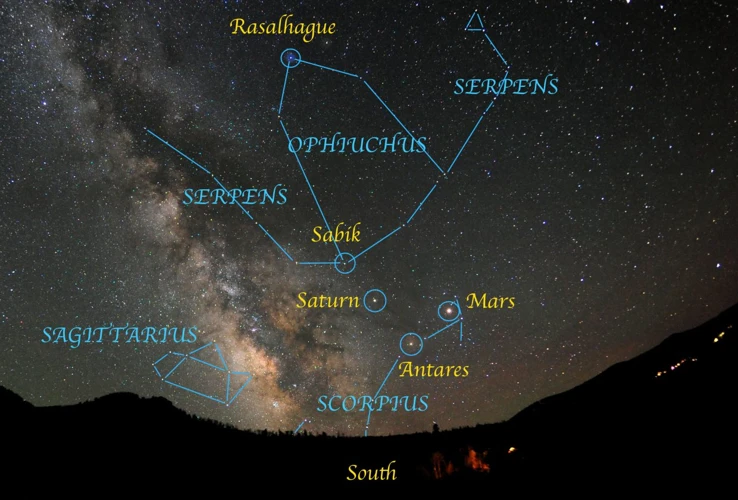
Astrological interpretations of planetary alignments delve deep into the intricate relationship between celestial bodies and human experiences. Astrologers believe that the positioning and alignment of planets at the time of a person’s birth can provide valuable insights into their personality traits, life events, and even destiny. By analyzing the specific alignment of planets in astrological charts and horoscopes, astrologers can make predictions and interpretations about various aspects of an individual’s life. Whether it’s understanding the influence of the Sun and Moon alignment on emotions and cycles of life or exploring the dynamic interplay of Venus and Mars alignment in matters of love and passion, astrological interpretations of planetary alignments provide a fascinating framework for understanding ourselves and the world around us (source). The ancient origins of zodiac signs are deeply intertwined with these interpretations, as they serve as a guide for astrologers in understanding the influence of planetary alignments on individuals (source). By exploring the depths of astrological interpretations, we gain a greater understanding of the mystical connections between the celestial realm and the human experience.
1. Sun and Moon Alignment
The alignment of the Sun and Moon is a celestial event that holds great significance in various cultures and belief systems. This cosmic alignment symbolizes the delicate balance between light and darkness, representing the cyclical nature of life.
In astrology, the Sun and Moon alignment plays a crucial role in shaping individual personalities and emotional characteristics. The Sun represents our core essence and ego, while the Moon represents our emotions and subconscious mind. When these two luminaries align, it can have a profound impact on our emotional state and overall well-being.
During a solar eclipse, for instance, the Moon aligns perfectly between the Earth and the Sun, casting a shadow and momentarily obscuring the Sun’s light. In many cultures, solar eclipses are seen as significant cosmic events that hold both spiritual and astrological implications. These alignments are believed to amplify the energy present during this time, marking moments of transformation and new beginnings.
In ancient cultures, the alignment of the Sun and Moon was often connected with the rhythms of nature and the changing seasons. It served as a timekeeping tool, allowing people to mark the passage of time and celebrate important festivals and rituals. The alignment of the Sun and Moon in ancient cultures often held religious and spiritual significance, reminding people of the interconnectedness between the earthly and celestial realms.
The alignment of the Sun and Moon continues to captivate astronomers and scientists as well. It provides unique opportunities to study solar phenomena, such as the corona (the outer atmosphere of the Sun) and various solar flares. These alignments also offer insights into the mechanics of our solar system and the gravitational forces that govern its movements.
The alignment of the Sun and Moon is a powerful and symbolic event that carries deep spiritual, astrological, and scientific meaning. It serves as a reminder of the delicate balance between light and darkness and provides a lens through which we can observe and understand the mysteries of our universe.
2. Jupiter and Saturn Alignment
When it comes to planetary alignments, the alignment of Jupiter and Saturn stands out as one of the most significant celestial events. This alignment, also known as the “Great Conjunction,” occurs when Jupiter and Saturn appear close to one another in the night sky from our perspective on Earth. Let’s dive into the significance of this remarkable alignment and explore its mystical meanings.
Symbology and Astrological Interpretation: The Jupiter and Saturn alignment holds great astrological significance. In astrology, Jupiter is associated with expansion, growth, wisdom, and abundance, while Saturn represents discipline, structure, and karmic lessons. When these two planets align, their energies intertwine, creating a dynamic balance between expansion and restriction, opportunity and challenge. This alignment often signifies a time of transformation, where old structures may crumble, making way for new beginnings and growth.
Historical and Cultural Importance: The alignment of Jupiter and Saturn has captured the curiosity and attention of various ancient cultures. This alignment is believed to occur approximately once every 20 years, and each alignment marks the beginning of a new cycle. In ancient societies, such as the Babylonians and Maya, these alignments were considered highly auspicious and were often associated with the birth and destiny of great leaders. The Great Conjunction also holds symbolic significance in many religious and spiritual traditions, representing the unity of opposites and the balance between masculine and feminine energies.
Impact on Personal and Collective Growth: The Jupiter and Saturn alignment has a profound impact on personal and collective growth. It is a time for introspection, reevaluation, and setting new goals. The alignment encourages us to assess our long-term plans, ambitions, and responsibilities, and make necessary adjustments to align with our true purpose. On a collective level, this alignment can signify societal shifts, cultural changes, and the evolution of institutions and systems.
The Great Conjunction and the Age of Aquarius: The most recent Jupiter and Saturn alignment on December 21, 2020, held special significance as it occurred on the same day as the winter solstice. This celestial event was associated with the dawning of the Age of Aquarius, a new era marked by innovation, humanitarianism, and spiritual awakening. Many believe that this alignment ushered in a period of profound transformation and heightened consciousness, aligning with the energy of the Aquarian Age.
As we explore the mystical meanings behind the Jupiter and Saturn alignment, we witness a cosmic dance of opposing forces blending together to shape our lives and the world around us. The Great Conjunction serves as a powerful reminder of the cyclical nature of existence and the constant interplay between expansion and limitation. It invites us to embrace change, learn from our past, and open ourselves to new possibilities as we navigate our journey through the celestial wonders of the universe.
3. Venus and Mars Alignment
The alignment of Venus and Mars is a celestial event that captivates both astronomers and astrologers alike. This unique alignment occurs when these two planets appear close to each other in the night sky, creating a dazzling spectacle for observers on Earth.
Astrological Significance: In astrology, the alignment of Venus and Mars holds great significance, as it symbolizes the dynamic interplay between love, passion, and desire. Venus represents love, beauty, and harmony, while Mars represents energy, passion, and action. When these two planets align, it is believed to bring about a blending of these energies, creating a powerful dynamic in relationships and personal pursuits. It is often associated with moments of romantic intensity, increased drive, and the pursuit of desires.
Symbology: The alignment of Venus and Mars carries a symbolic meaning that goes beyond its astrological interpretation. It represents the divine union of masculine and feminine energies, embodying the harmony and balance of opposing forces. This alignment is seen as a reminder of the importance of finding equilibrium within oneself and in relationships. It encourages individuals to embrace both their nurturing and assertive sides, creating a harmonious blend of qualities.
Cultural Interpretations: Throughout history, diverse cultures have interpreted the alignment of Venus and Mars in different ways. In Greek mythology, Venus (Aphrodite) and Mars (Ares) were associated with love and war, respectively. Their alignment was seen as a reflection of the powerful forces that shape human experiences. In ancient Roman astrology, Venus and Mars were considered the two most powerful love planets, and their alignment was seen as an auspicious time for romance and fertility rituals.
The alignment of Venus and Mars is a celestial event that resonates deeply within the realms of astrology, symbolism, and cultural interpretations. Whether observed through the lens of astrological insights, as a symbol of balance and harmony, or through the mythologies and beliefs of ancient cultures, this alignment serves as a powerful reminder of the complex dynamics that shape our relationships, desires, and the essence of our human experience.
Planetary Alignments in Ancient Cultures
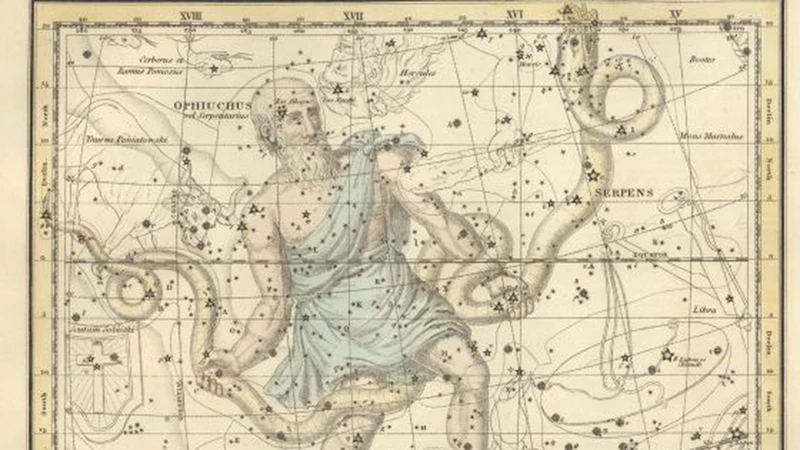
Ancient cultures, with their deep connection to the cosmos, held an awe-inspiring fascination with planetary alignments. These alignments were not merely astronomical events but were imbued with spiritual and symbolic significance. Egyptian astrology, for instance, closely observed the alignment of planets with specific constellations to gain insights into individual and collective destinies. Mayan astrology, on the other hand, placed great importance on planetary alignments to determine key dates and events in their complex calendar system. Vedic astrology, originating from ancient India, believed that planetary alignments influenced not only one’s destiny but also spiritual growth. The alignment of planets in ancient cultures was a testament to the understanding and reverence these civilizations had for the celestial realms, reflecting their quest for meaning and connection to the cosmos, which continues to captivate us today.
1. Egyptian Astrology
Egyptian Astrology: Egyptian astrology is an ancient practice deeply rooted in the civilization of ancient Egypt. Unlike modern Western astrology, which is primarily based on the movements of the sun, Egyptian astrology focuses on the alignment of planets with specific constellations. The Egyptians believed that celestial bodies, including planets, stars, and even comets, held great significance and could influence the lives of individuals and the destiny of nations.
In Egyptian astrology, each planet was associated with a specific god or goddess, encompassing unique qualities and characteristics. The alignment of these planets at the time of an individual’s birth was believed to determine their personality traits, strengths, weaknesses, and even their fate. For example, if a person was born with the planet Jupiter aligned with the constellation of Amun, it was believed that they would possess a sense of power, leadership, and the ability to inspire others.
The Egyptians also associated specific planetary alignments with important events and predictions. They believed that the alignment of planets at the time of a coronation or the start of a battle could determine the outcome and success of the endeavor. The alignment of planets was also closely observed for agricultural purposes, as it was believed to influence the fertility of the land and the abundance of the harvest.
To navigate the complexities of Egyptian astrology, ancient astrologers created intricate charts and diagrams depicting the positions of celestial bodies. These astrological charts were used to interpret the influence of specific alignments and provide guidance to individuals seeking to understand their destiny or make important decisions. Knowledge of Egyptian astrology was highly valued and passed down through generations, ensuring its preservation and continued practice throughout ancient Egypt.
Today, the influence of Egyptian astrology can still be seen in the interpretation of planetary alignments and the use of specific gods and goddesses associated with each planet in modern astrology. The cultural and historical significance of Egyptian astrology continues to captivate and inspire those who seek a deeper understanding of the cosmic forces that shape our lives.
2. Mayan Astrology
Mayan astrology, deeply rooted in the ancient Mayan civilization, holds a fascinating perspective on planetary alignments. The Mayans believed that the alignment of planets and celestial bodies played a crucial role in determining various aspects of life and the destiny of individuals. They developed a complex calendar system that incorporated the cycles of celestial bodies, known as the Long Count calendar.
In Mayan astrology, each day is associated with specific deities and symbols, and the alignment of planets is considered a significant factor in determining the energies and influences of a particular day. For instance, a planetary alignment involving Venus and Mars might be seen as a time of heightened passion and intense emotional energies.
The Mayans also assigned specific characteristics and qualities to each day based on the alignment of the planets. These qualities were believed to shape the personality traits of individuals born on those days. For example, individuals born during a planetary alignment that involved Mercury might be perceived as intellectual, communicative, and quick-witted.
Mayan astrology placed great importance on the zodiac signs, known as nahuals. These nahuals were associated with specific animals and governed different aspects of life such as career, relationships, and spirituality. The alignment of planets in relation to these nahuals was believed to offer insights into an individual’s strengths, weaknesses, and life path.
Mayan priests and astrologers played a central role in interpreting and predicting the outcomes of planetary alignments. They would observe the movements of celestial bodies and conduct elaborate ceremonies and rituals to honor and align with these cosmic energies. These rituals were believed to bring harmony and balance, as well as to seek guidance and protection from the deities associated with the celestial bodies.
Although the Mayan civilization is ancient, the wisdom of their astrology continues to captivate and inspire people today. By studying Mayan astrology and the significance of planetary alignments in their culture, we gain a deeper understanding of the intricate connections between the cosmos and human existence. It serves as a reminder that the alignment of celestial bodies has long been regarded as a potent force influencing our lives and shaping our collective journey.
3. Vedic Astrology
- Ancient Origins: Vedic Astrology, also known as Jyotish, has its roots in ancient India and is considered one of the oldest astrological systems in the world. It is derived from the Vedas, ancient Hindu scriptures that contain a vast wealth of knowledge on various subjects, including astrology. Vedic Astrology is deeply intertwined with spirituality and plays a significant role in guiding individuals towards self-realization and spiritual growth.
- Alignment and Cosmic Connections: Vedic Astrology places great importance on planetary alignments and their influence on various aspects of human life. It believes that each celestial body carries unique energies that interact with individuals based on their birth charts. The alignment of planets at the time of an individual’s birth is believed to shape their personality, characteristics, and life events. By understanding these alignments, Vedic astrologers can predict future events, provide guidance, and offer remedies to alleviate any negative influences.
- Nine Planets: Vedic Astrology recognizes the influence of nine planets, including the Sun, Moon, Mars, Mercury, Jupiter, Venus, Saturn, Rahu, and Ketu. Each planet is associated with specific qualities, energies, and impact on different areas of life. Vedic astrologers analyze the position and alignment of these planets in an individual’s birth chart to gain insights into their strengths, challenges, and karmic influences.
- Dasha System: Vedic Astrology utilizes a unique system called the Dasha system to predict life events and periods of planetary influences. This system divides an individual’s life into distinct planetary periods that last for specific durations. During each period, the planets exert their influence, and their alignment with other planets during these periods can significantly impact various aspects of life, including relationships, career, and personal growth.
- Karma and Remedies: Vedic Astrology believes in the concept of karma, which suggests that our actions in the past influence our present and future. When analyzing planetary alignments, Vedic astrologers consider an individual’s past actions, known as “karmas,” to provide insights into their current life circumstances. Additionally, Vedic Astrology suggests specific remedies, including mantras, gemstone recommendations, and rituals, to mitigate the negative influences of planetary alignments and enhance positive energies.
In Vedic Astrology, each planetary alignment is seen as a cosmic puzzle piece that contributes to the larger picture of one’s life journey and spiritual growth. By understanding the intricate connections between the planets and their alignment, Vedic astrologers offer invaluable guidance and support to individuals seeking deeper insights into their purpose, relationships, and overall well-being. Whether it’s navigating challenging periods or enhancing positive energies, Vedic Astrology provides a comprehensive framework for understanding and working with the ever-changing cosmic dance of planetary alignments.
The Influence of Planetary Alignments on Human Life
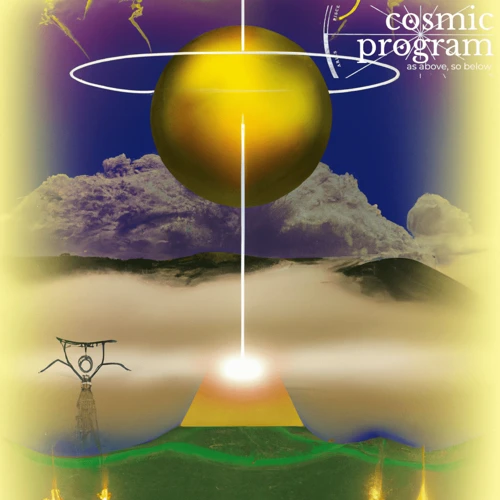
The Influence of Planetary Alignments on Human Life: Planetary alignments have long been believed to have a profound impact on various aspects of human life, influencing emotions, relationships, and personal growth. Each alignment carries its own unique energy and symbolism, which can affect individuals in different ways.
When the Sun and Moon align, it signifies a powerful union of the conscious and unconscious self. This alignment is often associated with heightened emotions, inner reflection, and the ebb and flow of life’s cycles. It is believed that during this alignment, individuals may experience increased intuition, vivid dreams, and a deeper understanding of their emotions.
The alignment of Jupiter and Saturn is considered particularly significant, marking a turning point or transition in life. This alignment often brings forth new opportunities, growth, and the manifestation of long-term goals. It symbolizes the need to embrace change and adapt to new circumstances. Individuals may feel a strong pull towards personal and professional advancement during this alignment, as it encourages stepping out of comfort zones and embracing new challenges.
Venus and Mars alignment, on the other hand, is associated with matters of love, passion, and desire. It symbolizes the interplay between masculine and feminine energy, bringing forth opportunities for romantic connections and intense emotional experiences. This alignment can inspire individuals to pursue their passions, express themselves creatively, and seek harmonious relationships.
It is important to note that the influence of planetary alignments on human life is not deterministic, but rather serves as a guiding force. These alignments provide a cosmic backdrop that can enhance self-awareness, self-reflection, and personal growth. By understanding the energies associated with different alignments, individuals can make conscious choices and navigate the ups and downs of life more effectively.
It is through observing and aligning with these celestial forces that individuals can harness their potential and tap into the universal energies at play. By embracing the influence of planetary alignments and integrating their energies into daily life, individuals may enhance their overall well-being and find deeper meaning and purpose in their experiences. The influence of these alignments reminds us of the intricate interconnectedness between the cosmos and each individual’s journey on Earth.
Making Sense of the Ophiuchus Alignment
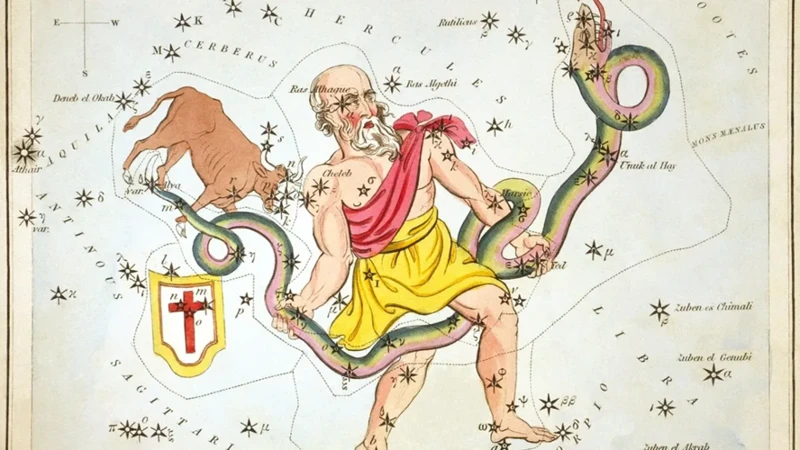
The Ophiuchus alignment is a topic that has stirred curiosity and debate among astrologers and enthusiasts alike. Ophiuchus, also known as the serpent bearer, is a constellation located between Scorpio and Sagittarius. While not traditionally included in the twelve zodiac signs, it gained attention when it was proposed as the thirteenth zodiac sign in recent years.
Understanding Ophiuchus Alignment: According to this alignment, individuals born between November 29 and December 17 fall under the influence of Ophiuchus. Advocates argue that Ophiuchus brings unique traits and characteristics that differentiate it from the other zodiac signs. It is associated with qualities such as wisdom, healing, and transformation. These individuals are believed to possess intuitive abilities and a deep connection to the mysteries of life.
Controversies and Challenges: The inclusion of Ophiuchus as an astrological sign has sparked both excitement and controversy within the astrological community. Some argue that it disrupts the traditional zodiac system and undermines the established interpretations of the twelve signs. Skeptics question the validity and accuracy of this alignment, citing that it does not align with the ancient origins of zodiac signs (source).
Interpreting Ophiuchus in Astrology: Astrologers who embrace the Ophiuchus alignment interpret it as a significant addition to the zodiac. They believe it provides a more comprehensive understanding of astrological influences, allowing for a deeper exploration of personality traits and life experiences. Ophiuchus is seen as a symbol of spiritual growth and transformation, inviting individuals born under its influence to embark on a journey of self-discovery and expansion.
Embracing New Perspectives: While the inclusion of Ophiuchus may challenge traditional astrological beliefs, it offers an opportunity for astrologers and enthusiasts to explore new dimensions of interpretation and expand their understanding of cosmic influences. Some individuals resonate with the traits attributed to Ophiuchus, finding a sense of connection and validation in this alignment. Others may choose to stick with the twelve zodiac signs they have known and identified with for centuries.
As the mystery surrounding the Ophiuchus alignment continues to unfold, it is up to each individual to make sense of its significance in their own lives. Whether one embraces it as a guiding force or remains skeptical, the inclusion of Ophiuchus in the astrological realm serves as a reminder that our understanding of the cosmos is ever-evolving, inviting us to explore new perspectives and expand our knowledge of the celestial wonders that surround us.
Scientific Perspectives on Planetary Alignments
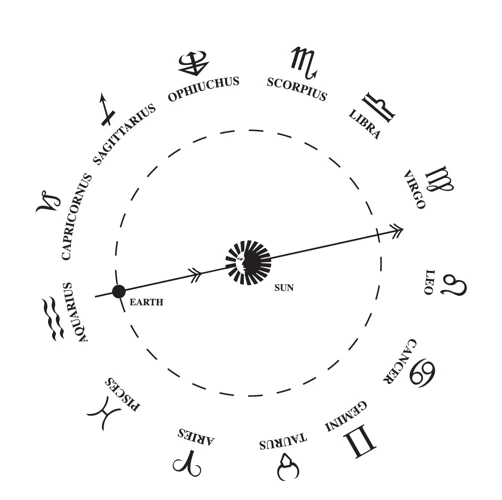
Scientific Perspectives on Planetary Alignments: While many view planetary alignments through the lens of astrology and spirituality, there is also a scientific perspective to consider. Scientists study planetary alignments to gain a deeper understanding of celestial mechanics and the gravitational forces at play in our solar system. Planetary alignments provide invaluable opportunities to observe and measure the interactions between celestial bodies, which can help scientists refine their models and theories about the universe.
One aspect that scientists focus on is the gravitational impact of planetary alignments. When multiple planets align in a specific configuration, their gravitational forces can interact and influence the orbits and movements of the bodies involved. This can result in changes in eccentricity, orbital resonance, and even gravitational perturbations that have long-term effects on the dynamics of our solar system.
Additionally, studying planetary alignments allows scientists to gather data about the physical properties of celestial bodies. By analyzing the way light interacts with planets, asteroids, and moons during alignments, scientists can extract valuable information about their atmospheric compositions, surface features, and even potential presence of geological activity.
Planetary alignments provide scientists with the opportunity to investigate the relationship between celestial bodies and phenomena in the cosmos. For example, the alignment of planets with comets or asteroids can help researchers understand the behavior and trajectory of these objects, shedding light on their origin and journey through space. These insights contribute to our overall understanding of the formation and evolution of our solar system.
It’s important to note that scientific perspectives on planetary alignments focus on the physical interactions and observations of celestial bodies, rather than interpretations of their spiritual or astrological significance. However, by studying these alignments from a scientific standpoint, we can deepen our knowledge of the universe and appreciate even more the intricate mechanisms that govern celestial phenomena.
Mythical and Folklore Associations with Planetary Alignments

Mythical and folklore associations with planetary alignments add a touch of magic and wonder to the already captivating phenomena. Throughout history, different cultures and civilizations have woven captivating stories around these celestial events, attributing them with mythical and symbolic meanings.
Greek and Roman Mythology: The ancient Greeks and Romans assigned deities to each planet, establishing a connection between the mythology and planetary alignments. For example, Venus, the goddess of love and beauty, is associated with the planet Venus. The alignment of Venus with other planets was believed to have a significant impact on matters of the heart and relationships. Similarly, the alignment of Mars, named after the god of war, was believed to signify periods of conflict and aggression.
Hindu Mythology: In Hindu mythology, planetary alignments hold great significance. Each planet is associated with a specific deity and embodies different qualities and influences. For instance, Surya (the Sun) represents enlightenment and energy, while Chandra (the Moon) symbolizes emotions and intuition. The alignment of these planets and others in Hindu astrology is believed to impact different aspects of life, ranging from health and relationships to career and spirituality.
Chinese Astrology: The Chinese have their own unique folklore and associations with planetary alignments. Chinese astrology focuses on the twelve animal zodiac signs, each associated with a specific planet or celestial body. The alignment of these planets at the time of birth is believed to impact an individual’s personality and destiny. For example, the alignment of Jupiter and Mars in Chinese astrology represents courage, leadership, and ambition.
Native American Folklore: Native American tribes also have their own rich folklore and associations with planetary alignments. Many tribes believe that the positions of stars and planets hold important messages and guidance for their communities. The alignment of certain planets, such as Venus and Mars, was often associated with fertility, love, and the harmony of the natural world.
These mythical and folklore associations with planetary alignments remind us of the deep connection between celestial events and human culture. They speak to our collective desire to make sense of the cosmos and find meaning in the movements of celestial bodies. Whether through ancient mythology or cultural traditions, these associations enhance the magical allure of planetary alignments and continue to inspire us with their timeless wisdom and wonder.
The Spiritual and Esoteric Significance of Planetary Alignments
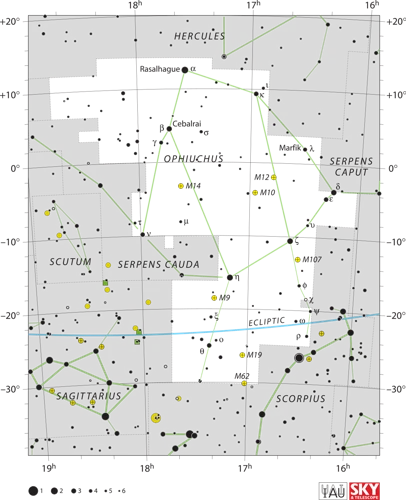
The spiritual and esoteric significance of planetary alignments is a subject that has intrigued mystics, spiritual seekers, and esotericists for centuries. These alignments are believed to hold a deeper meaning beyond their physical manifestations, connecting us to higher realms of consciousness and spiritual growth.
Awareness of Cosmic Energies: In spiritual and esoteric practices, planetary alignments are seen as portals of cosmic energy. These alignments are believed to amplify certain frequencies and vibrations, offering opportunities for inner transformation and spiritual awakening. Practitioners often utilize these alignments to harness and align themselves with the specific energies associated with each planet, allowing for a deeper connection to the divine.
Cosmic Synchronicity: The alignment of planets is seen as a cosmic dance, revealing the interconnectedness and synchronicity of the universe. It is believed that these alignments mirror the inner workings of our own lives and consciousness, providing insight into the larger cosmic patterns at play. By attuning ourselves to these alignments, we can align our own energies with the greater cosmic flow, leading to a sense of harmony and spiritual alignment.
Embodying Archetypal Energies: Each planet in astrology is associated with specific archetypal energies or qualities. The alignment of planets is seen as an opportunity to embody and integrate these energies into our own being. For example, the alignment of Mars and Venus might bring forth energies of passion, creativity, and sensuality. By consciously working with these archetypal qualities, individuals can tap into their full potential and explore different aspects of their own psyche.
Divination and Guidance: Planetary alignments are also utilized in divination practices to gain insight and guidance. Astrologers and mystics often interpret the cosmic energies present during alignments to offer guidance and predictions about the future. The alignment of specific planets may signify favorable or challenging times, allowing individuals to make informed decisions and navigate their spiritual journey with clarity.
Through exploring the spiritual and esoteric significance of planetary alignments, individuals can deepen their understanding of the interconnectedness between the celestial and the earthly realms. These alignments offer a gateway to higher realms of consciousness, providing opportunities for spiritual growth, transformation, and alignment with cosmic energies. By embracing the profound wisdom encoded within these alignments, individuals can embark on a journey of self-discovery and explore the depths of their own spiritual potential.
Exploring the Alignment of Inner and Outer Worlds
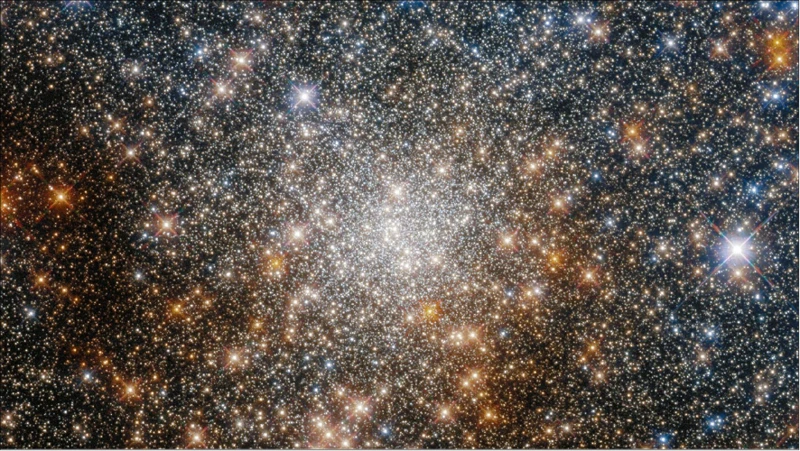
The alignment of planetary bodies not only holds significance in the external world but also carries profound implications for our inner selves. Exploring the alignment of inner and outer worlds delves into the interconnectedness between celestial events and our personal experiences, emotions, and spiritual journey.
The Spiritual and Esoteric Significance of Planetary Alignments: Many spiritual traditions and esoteric practices view the alignment of planets as a powerful time for inner reflection, meditation, and heightened spiritual experiences. It is believed that during such alignments, the energetic vibrations are intensified, providing an opportunity for deep introspection, transformation, and awakening. These alignments are seen as an invitation to align our inner selves with the harmonious flow of the universe.
Planetary Alignments and Personal Transformation: The alignment of planets can act as catalysts for personal growth and transformation. As celestial bodies come into alignment, they create energetic shifts that influence our thoughts, beliefs, and patterns of behavior. This alignment can inspire us to identify areas of our lives that no longer serve us and facilitate the necessary changes for personal evolution. It is a time to release old habits, embrace new perspectives, and align ourselves with our true purpose.
The Role of Planetary Alignments in Rituals and Ceremonies: Planetary alignments have long been incorporated into various rituals and ceremonies as a means of harnessing their transformative energies. Ancient cultures and modern spiritual practitioners alike have recognized the power of aligning with the cosmos during these auspicious times. From intention-setting ceremonies to meditation practices, these alignments serve as focal points for collective and individual rituals, amplifying the intentions and prayers of participants.
Astrologers’ Insights on Planetary Alignments: Astrologers study and interpret planetary alignments to provide insights into personal and collective experiences. These alignments are analyzed in the context of astrological charts and transits, allowing astrologers to predict potential opportunities, challenges, and shifts in energy. By understanding the specific planetary alignments relevant to an individual’s birth chart, astrologers can offer guidance and support regarding life paths, relationships, and personal growth.
As we explore the alignment of inner and outer worlds, we recognize the intricate connection between celestial phenomena and our inner landscape. These alignments serve as reminders of the vastness of the universe and the potential for transformation that exists within each of us. By embracing these alignments, we open ourselves to the wisdom, growth, and spiritual evolution that they offer. They invite us to align our inner selves with the harmonious dance of the cosmos and embark on a profound journey of self-discovery and realization.
Planetary Alignments and Personal Transformation
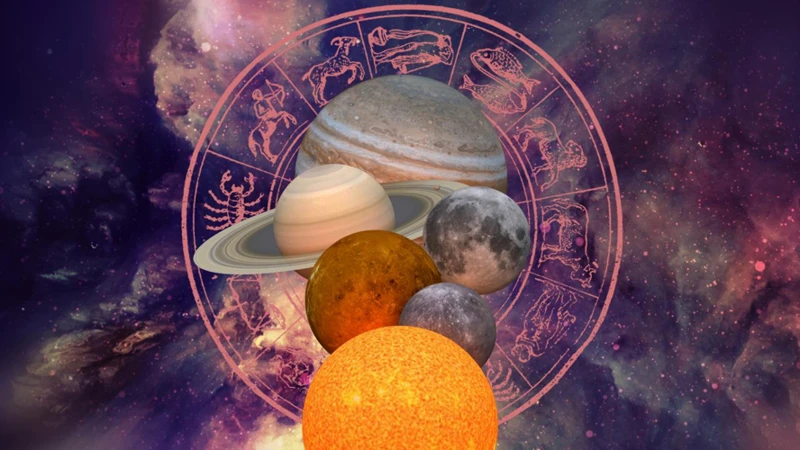
The alignment of planets has long been associated with personal transformation and spiritual growth. When certain planets align in specific ways, they are believed to herald significant shifts in individual consciousness and life paths. This connection between planetary alignments and personal transformation is a central focus in astrological and esoteric teachings.
Astrology and Personal Transformation: Astrology suggests that planetary alignments can serve as catalysts for self-reflection and personal growth. As planets move and align, they create energetic shifts that can prompt individuals to reevaluate their beliefs, values, and life choices. For instance, a conjunction between transformative Pluto and expansive Jupiter may inspire an individual to embark on a journey of self-discovery and empowerment, while a harmonious alignment between nurturing Venus and revolutionary Uranus could encourage breaking free from stagnant patterns and embracing new ways of relating to oneself and others.
Synchronicity and Planetary Alignments: Many individuals report experiencing significant life events or encountering profound synchronicities during specific planetary alignments. These synchronicities serve as powerful messages or guideposts, directing individuals towards a path of growth and self-realization. For example, someone might experience a series of synchronistic events during a rare alignment of planets, prompting them to embark on a new spiritual practice or pursue a creative passion.
The Role of Awareness: To fully harness the transformative potential of planetary alignments, it is essential to cultivate awareness and consciously engage with the energies at play. This involves paying attention to the planetary alignments in astrological forecasts and considering how they might be influencing one’s internal landscape. By consciously attuning to these celestial energies, individuals can better navigate the personal transformation and embrace the opportunities for growth that arise.
Integration and Inner Alignment: Personal transformation through planetary alignments often involves integrating different aspects of the self and aligning with one’s higher purpose. Alignments such as the conjunction of the Sun and Moon can support the integration of conscious and unconscious elements, facilitating a more harmonious and balanced inner state. Similarly, the alignment of Mars and Saturn can invite individuals to align their actions with their long-term goals, fostering discipline, and perseverance.
Planetary alignments have the potential to ignite personal transformation and facilitate spiritual growth. By recognizing the significance of these alignments, cultivating awareness, and consciously engaging with the energies at play, individuals can embark on a transformative journey towards self-realization and alignment with their true purpose. It is through this ongoing process of personal transformation that we can embrace the profound gifts that planetary alignments offer on our path of self-discovery.
The Role of Planetary Alignments in Rituals and Ceremonies
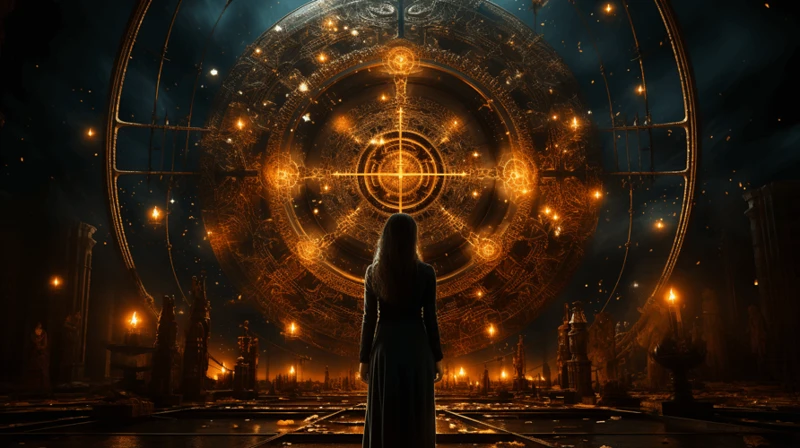
Planetary alignments have played a significant role in various rituals and ceremonies throughout history, spanning different cultures and belief systems. These celestial alignments are often seen as auspicious moments, imbued with heightened energy and spiritual significance. Here, we explore how planetary alignments have been incorporated into rituals and ceremonies across different traditions:
Astrological Rituals: Astrologers and practitioners of astrology often use planetary alignments as a guide for conducting rituals. These rituals are aimed at harnessing the energy of specific planetary alignments to manifest desires, set intentions, or seek spiritual guidance. For example, during a New Moon, when the Sun and Moon are aligned, rituals focused on new beginnings and manifestation are performed. Similarly, during a Full Moon, rituals centered around releasing, cleansing, and gratitude are commonly practiced.
Solar and Lunar Festivals: Many cultures celebrate solar and lunar festivals that coincide with specific planetary alignments. These festivities are often linked to agricultural cycles, marking the change of seasons and honoring the celestial bodies involved. For instance, the summer and winter solstices, which mark the alignment of the Sun with the Earth’s axis, are celebrated in various ways across different cultures. These festivals incorporate rituals, dances, and ceremonies to honor and align with the energy associated with the planetary alignment.
Alignment-based Ceremonies: Some ceremonies are specifically designed to align with specific planetary alignments, believing that it enhances the power and effectiveness of the ritual. For instance, during a grand conjunction of Jupiter and Saturn, which occurs approximately every 20 years, special ceremonies may be performed to harness the energy of this rare alignment. These ceremonies may include prayers, offerings, and rituals aimed at invoking the blessings and energies associated with the aligned planets.
Healing and Cleansing Rituals: Planetary alignments are also incorporated into healing and cleansing rituals. Practitioners believe that certain alignments carry specific healing energies that can be utilized to restore balance and harmony within individuals and their environments. These rituals may involve the use of crystals, herbs, sacred symbols, and meditation techniques aligned with the planetary energies to facilitate healing and transformation.
Through these rituals and ceremonies, individuals and communities seek to connect with the divine, align themselves with the energies of the Universe, and invoke blessings and guidance from the aligned planets. The role of planetary alignments in rituals and ceremonies serves as a bridge between the celestial and human realms, allowing individuals to tap into cosmic forces and bring about positive transformations in their lives.
Astrologers’ Insights on Planetary Alignments
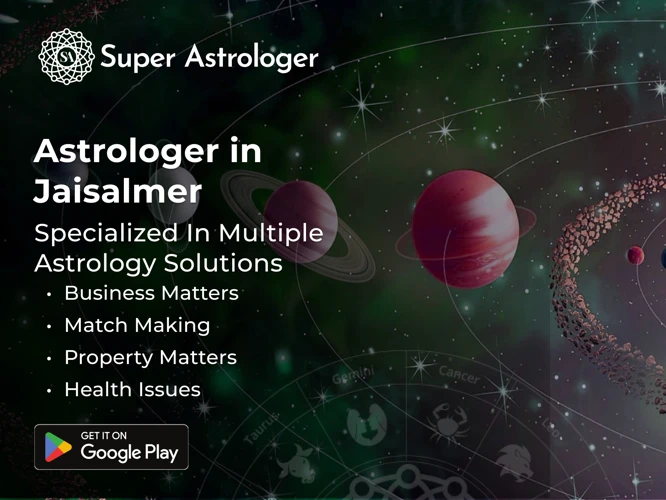
Astrologers have dedicated their lives to understanding the intricate relationship between planetary alignments and human experiences. Through their deep insights and interpretations, they provide valuable guidance and predictions based on the positions of celestial bodies in the sky.
The Complexity of Interpretations: Astrologers consider various factors when analyzing planetary alignments, including the zodiac signs involved, the aspects between planets, and the houses in an individual’s birth chart. They interpret these alignments to gain insights into personality traits, relationship dynamics, career prospects, and much more. Their expertise allows them to decipher the unique energies and influences exerted by each alignment.
Timing and Transits: Astrologers pay close attention to planetary transits, which occur when planets move across specific points in an individual’s birth chart. These transits are believed to trigger specific events or experiences in one’s life. For example, the transit of Saturn over one’s natal Moon may signify a period of emotional intensity or significant life changes. Astrologers use these transits to provide forecasts and guidance for navigating the various phases of life.
Predictive Analysis: Utilizing their extensive knowledge and experience, astrologers can make predictions and forecasts based on planetary alignments. They analyze the ongoing movements of planets and their interactions to anticipate potential challenges, opportunities, and shifts in various areas of life. Additionally, they examine past alignments to gain insights into recurring patterns and themes that may emerge in the future.
Personal Growth and Self-Awareness: Astrologers emphasize the transformative potential of planetary alignments. They believe that self-awareness and personal growth can be achieved by understanding and aligning with the energies of celestial bodies. By recognizing their own strengths, weaknesses, and potential challenges highlighted in their birth charts, individuals can make informed choices, embrace personal development, and enhance their overall well-being.
Astrologers’ insights on planetary alignments provide a deeper understanding of the profound connection between the celestial and human realms. They offer valuable guidance, empowering individuals to navigate life’s complexities, make informed decisions, and embark on a journey of self-discovery. With their wisdom and interpretations, astrologers shed light on the mysterious dance of the planets and help us find meaning within the cosmic symphony of our lives.
Astrological Forecast: Exciting Planetary Alignments Ahead
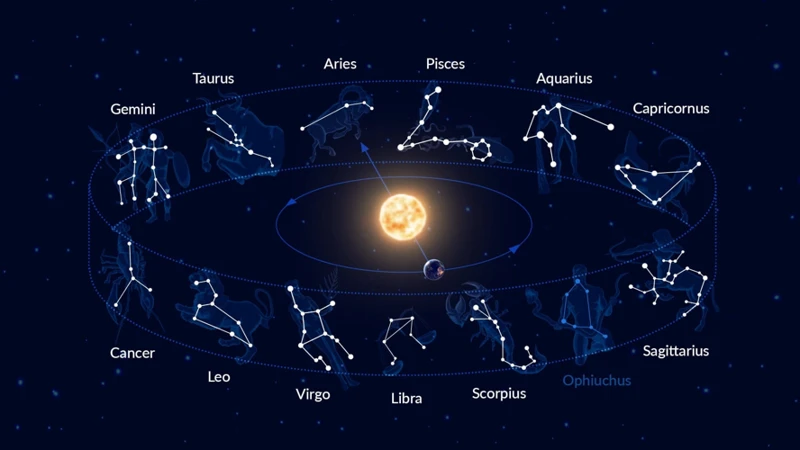
1. Mercury Retrograde: Get ready for the notorious Mercury retrograde, a period when the planet Mercury appears to move backward in its orbit. This alignment can bring miscommunication, technological glitches, and disrupted travel plans. It is advised to double-check important documents, back up data, and be cautious with communication during this time.
2. Grand Trine Alignment: A Grand Trine alignment occurs when three planets form a harmonious equilateral triangle in the astrological chart. This alignment signifies a period of ease, stability, and positive energy. It offers opportunities for personal growth, creative endeavors, and smooth relationships. Embrace the flow and make the most of this favorable cosmic influence.
3. New Moon and Solar Eclipse: New moons mark beginnings and fresh starts, and when coupled with a solar eclipse, the energy intensifies. This powerful alignment signifies a potent time for setting intentions, manifesting goals, and embarking on new ventures. Take advantage of this transformative energy to align your desires and actions.
4. Saturn Return: For individuals around the age of 29-30, the Saturn Return marks a significant astrological event. It occurs when the planet Saturn completes its first full orbit around the Sun since your birth. This alignment brings challenges, growth, and introspection, as it pushes you to reassess life choices and set a solid foundation for the future.
5. Jupiter and Neptune Alignment: When Jupiter and Neptune align, the focus shifts to spirituality, intuition, and creativity. It is a time to explore your dreams, connect with your inner wisdom, and seek artistic inspiration. This alignment encourages you to trust your instincts and embrace the magical possibilities that lie ahead.
6. Mars Retrograde: Mars retrograde, a period when the planet Mars appears to move backward in its orbit, can bring intensified energy and conflicts. It is important to channel this energy wisely, staying mindful of impulsive actions and emotional reactions. Focus on personal development, reflection, and reassessing your passions and desires.
As we look ahead to these exciting planetary alignments, it is always crucial to remember that astrological forecasts provide insights and guidance, but personal choices and mindset shape our experiences. Embrace these celestial events as opportunities for growth, transformation, and alignment with cosmic rhythms. With an open heart and a mindful approach, you can navigate these alignments and create a positive impact on your journey of self-discovery and evolution.
Planetary Alignments in Popular Culture

Planetary alignments have not only captured the attention of astrologers, scientists, and ancient civilizations but have also found their way into popular culture. Throughout history, these celestial events have been depicted and referenced in various forms of entertainment, literature, and art, adding an element of mystique and wonder to our collective imagination.
Movies and TV Shows: Planetary alignments have been featured in several movies and TV shows, often as a catalyst for extraordinary events or as a backdrop for momentous occasions. From the alignment of planets in superhero films that grant extraordinary powers to characters, to futuristic sci-fi shows that depict planetary alignments as gateways to other dimensions or time travel, their portrayal in popular culture ignites a sense of adventure and unknown possibilities.
Literature and Fantasy Novels: Many works of literature and fantasy novels incorporate planetary alignments as a central theme or a plot device. These alignments are often associated with prophecies, magical rituals, and the alignment of cosmic forces that shape the fate of characters and their worlds. As readers explore these stories, planetary alignments become metaphors for personal transformations, epic battles, and the fulfillment of destiny.
Video Games: Planetary alignments frequently make an appearance in video games, particularly those set in fantasy or science-fiction worlds. Players may encounter quests or challenges that revolve around aligning celestial bodies, unlocking hidden powers, or altering the course of a virtual universe. The inclusion of planetary alignments in gaming adds a layer of mystery and intrigue, immersing players in awe-inspiring cosmic environments.
Music: Planetary alignments have inspired countless songs and compositions across various genres. From the melodic and ethereal sounds of ambient music that evoke a cosmic journey through aligned planets, to the energetic and pulsating beats of electronic music that capture the sense of alignment as a transformative experience, musicians and artists have used the concept of planetary alignments to create captivating soundscapes.
Ancient Symbolism and Mythology: Popular culture often draws inspiration from ancient symbolism and mythology, incorporating planetary alignments as recurring motifs. From the ancient origins of zodiac signs (source) to mythical creatures and gods associated with specific planetary alignments, such as the Greek god Apollo connected with the alignment of the Sun, these references imbue popular culture with a sense of depth and mystical connections to the past.
Planetary alignments in popular culture serve as a source of inspiration, sparking our curiosity and imagination. They invite us to envision new possibilities, explore the unknown, and contemplate our place in the vast universe. Whether we encounter planetary alignments through movies, books, video games, or music, their portrayal in popular culture continues to captivate and enchant us, reminding us of the timeless fascination with the celestial wonders that surround us.
Conclusion

In conclusion, the significance of planetary alignments extends far beyond their mere astronomical occurrence. These alignments have captivated human beings for centuries, inspiring awe, wonder, and introspection. From the astrological interpretations that offer insights into our personalities and life events, to the ancient cultures that revered and relied upon these alignments for guidance, there is a profound acknowledgment of their impact on our lives. Even from a scientific perspective, planetary alignments provide valuable insights into the workings of our solar system and the gravitational forces that shape it. We have explored the spiritual and esoteric associations, the alignment of inner and outer worlds, and the potential for personal transformation that arises from these celestial events. Ultimately, planetary alignments serve as a reminder of the interconnectedness of the universe and our place within it, inviting us to contemplate our existence and embrace the mysteries that lie in the celestial realm. As we continue to gaze at the night sky, may we find solace and inspiration in the ever-changing dance of the planets, forever shedding light on the mystical meanings behind their alignments.
Frequently Asked Questions

1. What exactly is a planetary alignment?
A planetary alignment refers to the arrangement of planets in the solar system, where they appear to align in a specific configuration when viewed from Earth. This alignment can be linear or clustered, and it can consist of any combination of planets.
2. Do planetary alignments have any scientific significance?
While planetary alignments have scientific interest, they do not necessarily have a direct scientific significance. Scientists study planetary alignments to better understand celestial mechanics and gravitational forces, which can help in predicting the behaviors of celestial bodies and phenomena.
Yes, there is a connection between planetary alignments and zodiac signs. Astrologers consider the position of planets during a person’s birth to determine their zodiac sign and its corresponding characteristics. However, it is important to note that astronomy and astrology are distinct disciplines.
4. Can planetary alignments affect human emotions?
Astrologers believe that planetary alignments can influence human emotions due to the energetic vibrations emitted by the celestial bodies. For example, the alignment of the Sun and Moon is thought to influence the ebb and flow of emotions experienced by individuals.
5. Do planetary alignments have historical significance?
Absolutely. Planetary alignments have been of great significance in various ancient cultures. They were observed and studied by civilizations such as the Egyptians, Mayans, and Vedic astrologers, who associated specific meanings and predictions with these alignments.
6. Can planetary alignments predict the future?
In astrology, it is believed that planetary alignments can provide insights into future events and personal experiences. However, it is important to approach such predictions with a degree of skepticism and understanding that personal choice and free will also play major roles in shaping our lives.
7. How often do major planetary alignments occur?
The occurrence of major planetary alignments can vary. Some alignments, such as the conjunction of Jupiter and Saturn, happen approximately every 20 years. Other alignments may occur more frequently or with longer intervals, depending on the specific combination of planets involved.
8. Are there any upcoming notable planetary alignments?
In the coming years, there are several notable planetary alignments to look forward to. For example, in the year 2022, there will be a rare alignment of Venus and Mars, creating a visual spectacle in the night sky. Astrologers often consider these alignments as potentially significant cosmic events.
9. Can planetary alignments impact personal growth and transformation?
According to believers in astrology, planetary alignments can indeed have an impact on personal growth and transformation. They are seen as opportunities for introspection, self-discovery, and creating positive change in one’s life.
10. Can individuals harness the energy of planetary alignments for rituals and ceremonies?
Yes, many individuals and spiritual practitioners associate planetary alignments with heightened energy and use them as auspicious times for conducting rituals and ceremonies. These events are believed to enhance the effectiveness of intentions, manifestations, and spiritual practices.
References
- What it means for planets to align
- Venus and the crescent moon light up the early morning …
- When the Planets Align
Frequently Asked Questions

What are planetary alignments?
Planetary alignments refer to the positioning of planets in relation to one another in the solar system. They occur when two or more planets align along a straight line or form specific geometric patterns.
Do planetary alignments have any significance?
Yes, planetary alignments hold significance in various fields such as astrology, ancient cultures, science, spirituality, and folklore. They are believed to have an impact on human life, personal transformation, rituals, and even popular culture.
What astrological interpretations can be derived from planetary alignments?
Astrologers derive various interpretations from planetary alignments. For example, alignment between the Sun and Moon is associated with emotional harmony, while the alignment of Jupiter and Saturn signifies societal and economic shifts. Venus and Mars alignment often represents the balance between love and passion.
Which ancient cultures have associations with planetary alignments?
Ancient cultures like the Egyptians, Mayans, and Vedic astrologers have rich associations with planetary alignments. They incorporated planetary alignments into their astrological systems and believed that these alignments affected human destiny and events on Earth.
Do planetary alignments influence human life?
According to various beliefs and astrological perspectives, planetary alignments are believed to influence human life. They can impact individuals’ personalities, relationships, and even career paths. Some people consult astrologers to understand how these alignments may affect them.
What is the significance of the Ophiuchus alignment?
The Ophiuchus alignment refers to the alignment of the constellation Ophiuchus with the Sun during a specific period. This alignment challenges the traditional zodiac system and has sparked debates among astrologers and enthusiasts regarding its influence on astrology and individual horoscopes.
What do scientific perspectives say about planetary alignments?
In scientific terms, planetary alignments are seen more as coincidental occurrences rather than having direct influences on human life. Scientists study these alignments to understand celestial mechanics, gravitational effects, and the dynamics of the solar system.
Are there any mythical and folklore associations with planetary alignments?
Yes, many myths and folklore tales from different cultures associate planetary alignments with divine events, prophecies, and cosmic interactions. These stories often weave mystical narratives around the alignments, attributing them with magical powers and transformative energies.
What is the spiritual and esoteric significance of planetary alignments?
From a spiritual and esoteric perspective, planetary alignments are seen as opportunities for spiritual growth, manifestation, and the alignment of inner and outer energies. They are believed to enhance spiritual practices, meditation, and the exploration of higher consciousness.
How do planetary alignments relate to personal transformation?
Planetary alignments are often seen as potent periods for personal transformation. They can mark significant shifts in one’s life, providing opportunities for self-reflection, introspection, and making positive changes. Many individuals use these alignments as catalysts for personal growth and self-improvement.







